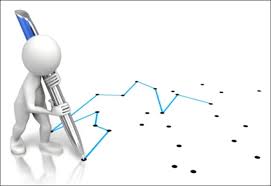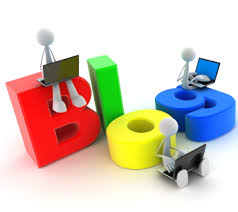For many of us, the start of the year means setting new goals. One of the goals that we often take for granted is in the area of personal development. Since we are at the start of 2016, this article by Dorie Clark is indeed appropriate and thought provoking. Happy New Year and Happy Reading…
With 2016 upon us, you’ve probably set business goals for the year ahead: launch the new product, grow sales by 20%, or complete the acquisition. You may even have set personal New Year’s Resolutions, like losing 10 pounds or going to the gym three times a week or finally learning Spanish.
But professional development – improving yourself at work beyond meeting your specific performance goals – is too often left to the rote box-checking of annual performance reviews. To successfully move to the next level, we need to ask ourselves: How can I ensure I’m more valuable at the end of the year than I was at the beginning?
Some of the investments will take time to show results. But following through on them is likely to become your personal competitive advantage, because so many people focus only on quick wins and abandon the rest.
Professional development takes three main forms: learning, connecting, and creating. Depending on the phase of your career and your other goals for the year, you may want to prioritize one more than the others.

Creating your learning goals starts with identifying the gaps in your current knowledge or experience. Are there areas of your job or field you’re not sufficiently familiar with? If you’ve moved into a new job or functional area, you may want to do basic research so you can be conversant with the canonical literature of the field.
When I started my consulting business a decade ago, I spent a little bit of time every night for roughly three years reading classic management authors like Peter Drucker and popular current writers like Jim Collins and Keith Ferrazzi. If you want to be taken seriously as a consultant, you at least need to know what it means to “get the right people on the bus” or “never eat alone.”
Similarly, if you’re on a new international assignment, you’ll want to dive into narrative journalism about the local politics and culture, and the most important fictional works that people in the country will refer to (and expect you to know).
There may be particular skills you want to pick up or interesting trends you see on the horizon that you’d like to learn more about. From there, you can chart out the best method – whether it’s taking a course (either in-person or online), independent reading, or listening to podcasts.

Developing your connecting goals starts with a look at where power resides in your organization. Specifically, who has control over your professional future? Clearly your boss does, but oftentimes a decision to promote you or give you plum assignments doesn’t come from her alone. Who else has influence? And who are the people she listens to most closely? As I describe in “A Campaign Strategy for Your Career,” you can draw a power map that reflects these relationships, and color-code it: green if you have a close connection, yellow if it’s tepid, and red if it’s negative or non-existent.
Your goal for the year should be to improve each key relationship by a color; i.e., turning red relationships yellow, and yellow relationships green. Think about ways you can start to spend more time with key people (without seeming creepy or opportunistic). Perhaps you serve on a committee together, and you could suggest meeting for coffee to talk about the latest developments. Maybe you can make a point of lingering to talk longer with your boss’ assistant, so you can develop a more robust relationship. Or perhaps a key influencer is sponsoring a table at a charity dinner and looking for people to buy seats; this might be a great opportunity to support a cause he cares about and spend three hours getting to know him outside work.
If you’ve been at your company for a while and already have a robust network, you can look outside for your connecting goals: who else do you want to meet in your field, or in your local business community?

Finally, one of the most underused forms of professional development is creating. Many people think of professional development as a more passive form of skills building. But creating content and sharing your insights is valuable form of professional development on two fronts. First, the act of writing (or giving speeches or making podcasts or creating videos) forces you to crystallize your knowledge into a form that’s comprehensible and engaging to others. That sharpens your own understanding and prompts you to think more deeply about the issues.
Second, as I describe in my book Stand Out, one key element of developing yourself as a professional is cultivating your personal brand. When you share your knowledge publicly, your expertise can be recognized – and you’ll reap the benefits in the form of new client inquiries, respect from your peers, and opportunities you likely can’t yet imagine. Developing an expert reputation doesn’t happen overnight, but a steady creation drip of, say, one blog post per week can pay enormous professional dividends within a year or two.
Your development as a leader is a long-term investment that requires not just time and effort, but careful planning. If you make your professional resolutions with a clear understanding of how you’ll advance your learning, connecting, and creating goals, you’ll be well ahead of the pack by this time next year.
Dorie Clark is a marketing strategist and professional speaker who teaches at Duke University’s Fuqua School of Business. She is the author of Reinventing You and Stand Out. You can receive her free Stand Out Self-Assessment Workbook.



